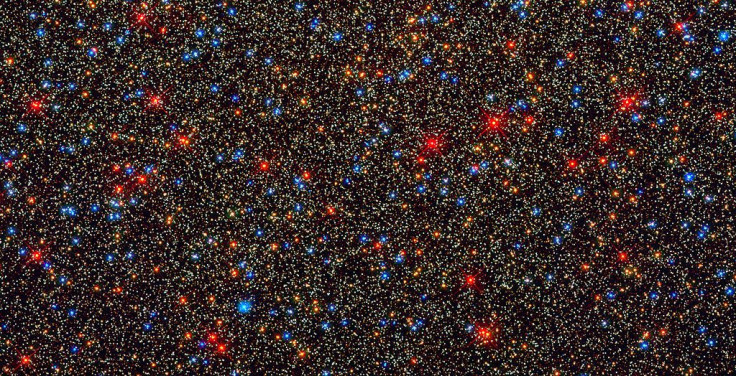NASA's Hubble Captures Stunning 'Jewel'-Like Messier 28 In Sagittarius Constellation [PHOTO]

NASA has shared a stunning image of a globular cluster in the constellation of Sagittarius (the Archer).
On its Twitter page, the U.S. space agency revealed an incredibly detailed look at the star cluster Messier 28. Located around 18,000 light-years away from Earth, the M28 was discovered by Charles Messier and added to his catalog in 1764. The French astronomer mistakenly referred to Messier 28 as a "[round] nebula containing no star," according to NASA's website.
#HubbleFriday Hubble captured this image of Messier 28, a globular cluster in the constellation of Sagittarius (the Archer), in jewel-bright detail. It is about 18,000 light-years away from Earth: https://t.co/JUyMWIRnEr pic.twitter.com/yZqf2eR7vA
— Hubble (@NASAHubble) March 15, 2019
However, this was as an understandable mistake as nebula was a term used for any astronomical object that was not clearly localized and isolated during his time. In fact, Messier called his list of 110 astronomical objects the "Catalogue of Nebulae and Star Clusters" and used the term nebula to describe a wide variety of cosmic objects, including star clusters and supernova.
Messier likely also miscategorized the globular cluster Messier 28 because there was no Hubble Space Telescope to provide a clear view of the celestial object at the time. It would only appear as a faint, shapeless, nebulous cloud when viewed through old technology.
The Hubble, however, has captured an incredibly detailed image of Messier 28 that shows the globular cluster in all its glory.
This isn't the only cosmic object from Messier's catalog that Hubble has taken images of, however, as the NASA/ESA telescope had observed 96 of the 110 objects by June 2018. Among those captured by the Hubble are the Pleiades or Seven Sisters (M45) and the 16th object in Messier's list, the famous Pillars of Creation in the Eagle Nebula.
M45, best known as the Pleiades, was observed by Galileo in 1610 and cataloged by Charles Messier in 1769. #Hubble’s 1999 observation shows an interstellar cloud being obliterated by the passage of one of its brightest stars. https://t.co/EoEbsUO82Q #NotaComet pic.twitter.com/7EsJ04EMxJ
— Hubble Space Telescope (@HubbleTelescope) June 13, 2018
The Pleiades are an open star cluster in the constellation of Taurus and the most obvious to the naked eye in the night sky. It was first observed by Galileo in 1610, decades before Messier added it to his list in 1769. The Pillars of Creation, on the other hand, is in the Serpens constellation about 6,500 to 7,000 light-years from Earth.
A mosaic image that shows half of the Andromeda Galaxy, which is designated M31 in Messier's list, was also created by combining almost 7,400 exposures taken by the Hubble. As Milky Way's nearest neighbor, the Andromeda Galaxy is located about 2.5 million light-years away and is around 220,000 light-years wide.
Check out this link for all the images taken by the Hubble telescope of objects in Messier's catalog.
© Copyright IBTimes 2024. All rights reserved.





















